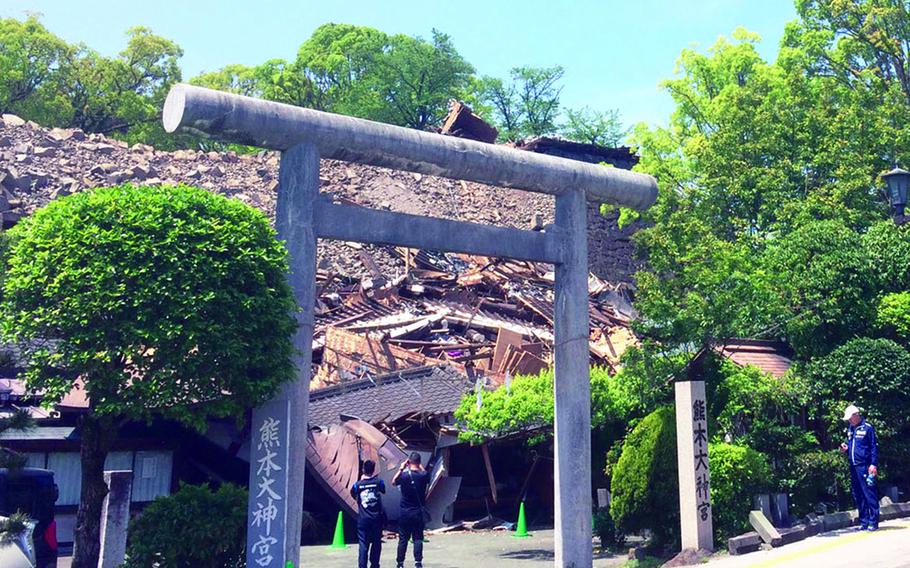
People check out earthquake damage at Kumamoto Castle in Kyushu prefecture, Japan, April 20, 2016. (Seth Robson/Stars and Stripes)
TOKYO — U.S. citizens in Japan should stay alert and take disaster prevention measures following a warning about increased risk of a large earthquake, according to the State Department.
A “megaquake advisory” for the Nankai Trough was issued Thursday by the Japan Meteorological Agency. The risk is higher than usual, but the agency cannot predict when it may occur.
The Nankai Trough is a tectonic plate boundary off the east coast of Japan and running along the southern half of Honshu — the largest of Japan’s four main islands — to Kyushu, the southernmost of the four.
A large earthquake occurs in the trough every 100 to 200 years, according to a Friday report by public broadcaster NHK.
Japanese officials think the risk of such a quake has increased following a magnitude 7.1 temblor off the coast of Kyushu on Thursday that injured nine people.
Tsunami waves of up to 1.6 feet were detected along Kyushu’s southern coast and the nearby island of Shikoku after the quake. Tsunami advisories were issued, but lifted, for all areas 5 ½ hours later.
The Japanese warning does not indicate that an earthquake is imminent, but people should “stay alert and take disaster prevention measures,” U.S. Embassy Tokyo posted Friday on its official Facebook page for Americans living in Japan.
“The U.S. Embassy in Tokyo will be releasing informational content over the coming days to re-emphasize good emergency preparedness,” the post reads.
Japan’s Earthquake Research Committee estimates a 70% to 80% probability of a massive earthquake with a magnitude of 8 to 9 will occur within the next 30 years, NHK reported.
The Meteorological Agency recommends people ensure they are prepared, such as securing furniture, arranging to confirm the safety of family members and identifying the locations of evacuation shelters, according to NHK.
In a follow-up Facebook post, U.S. Embassy officials urged Americans in Japan to review emergency plans and visit the embassy’s webpage for information on how to prepare for emergencies.
Japan is one of the world’s most earthquake-prone countries and sits on the Ring of Fire, a region of seismic faults around the Pacific.
In March 2011, a massive magnitude 9 quake — the biggest ever recorded in Japan — struck the Tohoku region. The quake and ensuing tsunami killed more than 19,000 people and caused a meltdown at the Fukushima Daiichi nuclear power plant.
U.S. Forces Japan pitched in with disaster-relief missions following that and other Japanese earthquakes.
In January, U.S. Army helicopters flew thousands of pounds of aid to victims of an earthquake on the Noto Peninsula, in western Honshu, that killed 240.
In April 2016, U.S. forces airlifted thousands of pounds of supplies to Kumamoto, on Kyushu, after a series of quakes killed dozens of people and damaged thousands of homes.